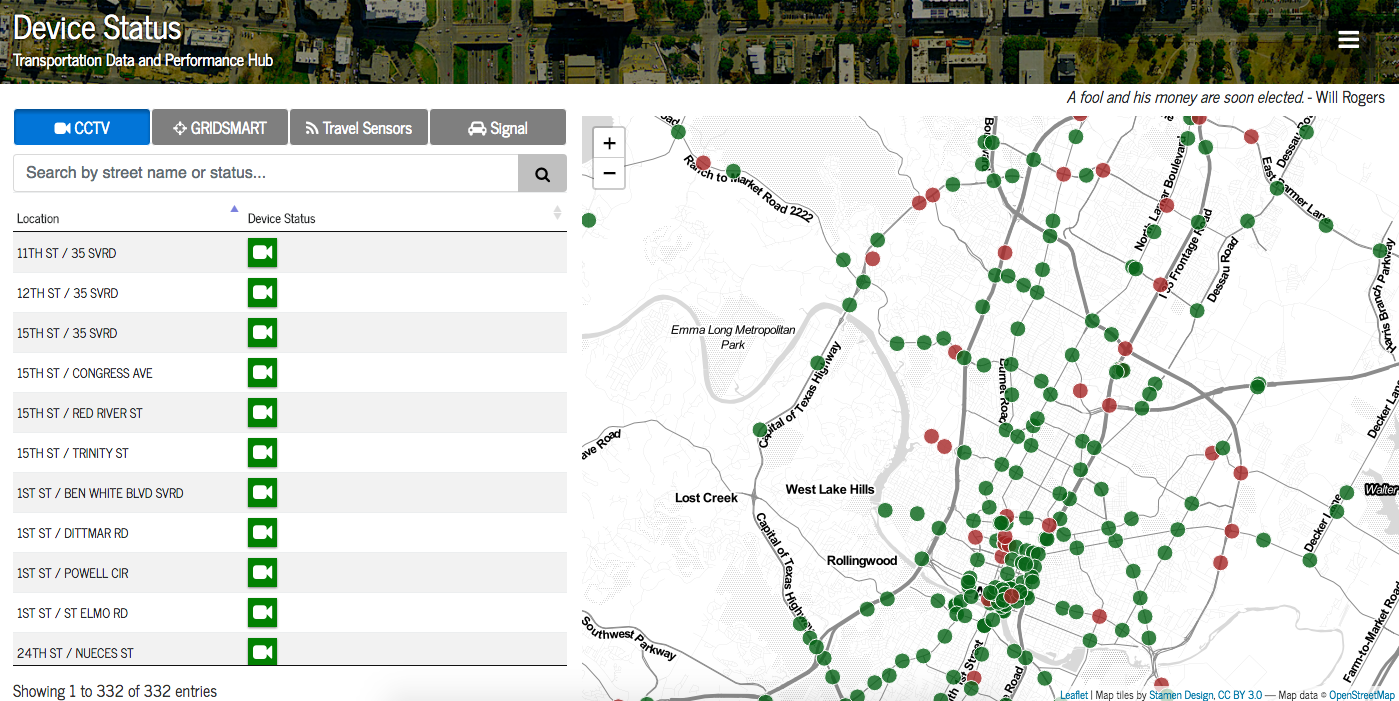
Digital Briefing Center: The Hitchhiker's Guide to Government Travel & Spend Management
Tracking the Travel Transformation in Federal, State, and Local Government
Government travel is on the verge of transformation, and that has exciting implications for those in public service. New technology and processes are now available that promise to improve how employees manage travel on the taxpayer's dime, but continued reliance on antiquated equipment, outdated spend models, and complicated policy threaten to restrict these capabilities. From challenging long-standing per diem models to reducing the complexity of the booking experience, Government Business Council invites you to join us in our Digital Briefing Center as we highlight the latest insights and innovations currently underway to make public sector travel more convenient, cost-effective, and competitive with the best travel practices of the twenty first century.
Feel free to scroll through the page or use the navigation bar at the top to jump to a specific topic.

Briefing #1
A Smarter Per Diem
Every day, thousands of public servants travel across the U.S. and around the world to carry out their agency’s mission. Reimbursement of all government business travel — not just the entirety of federal travel but a high proportion of state and local agencies as well — is controlled by government-established per diem, a system where by employees are given an allowance to cover lodging, meals, and incidental expenses accrued while on the move.
Currently, the General Services Administration (GSA), Department of Defense (DoD), and State Department (State) share responsibility in establishing per diem rates and rules for their separate spheres of travel — respectively, the Continental United States (CONUS), non-foreign (e.g., Guam, Hawaii), and international (e.g., Asia, Europe). Despite differences in policy, they generally subscribe to the same model when funding their travelers: a pre-defined flat rate, calculated by locality cost and duration of stay.
However, as technology has improved government’s ability to track data, it’s also provided opportunities to refine the per diem playbook. GSA’s SmartPay program allows agencies to issue travel charge cards to frequent travelers, which instantly store and report all transactions while on the go, as well as provides agencies a rebate for total sales volume. At the same time, the commercial travel industry has embraced the use of digital e-receipts over paper receipts, so employees no longer have to worry about substantiating their expenses with hard copy attachments. While government has capitalized on these developments to some degree, it has yet to realize such benefits across the board. For an illustration of this, look no further than the different approaches it takes to lodging reimbursement versus meals and incidental expenses (M&IE).
Let’s consider lodging first. Over the years, GSA and DoD have adopted a lodgings-plus methodology, allowing agencies to reimburse employees for their actual lodging expenses up to a set limit. This is important because it harnesses the convenience of digital transactions to simplify expense management for the traveler and the agency. For example, say you’re a federal employee and your business takes you to Arizona. Your lodging per diem limit is $120, but you book a hotel that costs $95. Under the lodgings-plus per diem method, you would be reimbursed the actual amount that your charge card digitally expensed when you paid for your hotel: $95. Conversely, if you found a nicer hotel at $145 per night, then you would be reimbursed up to the limit of $120 and pay the remainder from your own pocket.
Meals and incidental expenses (M&IE) are different. Unlike lodging, government M&IE still operates under a fixed per diem rate. So if the fixed allowance for M&IE in Memphis is $59 and a traveler spends $42 on meals for a given day, the traveler is reimbursed the fixed amount of $59. The payment amount is greater than the actual expense incurred, resulting in a significant portion of federal travel policy that is focused on defining exceptions to the flat M&IE rate. Considering that GSA’s Federal Travel Regulations (FTR) alone contains over 300 pages of such policy—specifying all types of rules and regulations for covering certain expenses under certain circumstances—it’s not at all uncommon for travelers to find themselves ensnared in a web of complications and compliance.
In a pre-digital era, the fixed per diem model actually made sense: by assigning a locality-based fixed rate, it eliminated the need to manually track every individual meal and incidental expense accrued over a single trip. However, government’s success with the lodgings-plus model shows that reimbursing employees for actual expenses isn’t just viable from a user efficiency standpoint; it’s also a significant cost saver. In the commercial world, where corporations have largely embraced reimbursing employees for actual M&IE, organizations have seen as much as 35% reduction in their overall travel spend each year.
Government took the right step in moving toward lodgings-plus, but it doesn’t have to stop there. The capabilities now exist to extend the same approach to meals, promising both a better user experience for the traveler and significant cost savings for Uncle Sam.

Briefing #2
Improving Travel Obligation
The late Chuck Berry said it best: “When I look at a contract, I look at the obligation - where, when, how long, the compensation. If I agree to it, that's the way it is. I have an obligation. They have an obligation.”
A central part of the government budgeting process, obligation happens when an agency sets aside, or “obligates,” a portion of its funding each year to reserve those funds for specific use at a later date. When it comes to travel, for example, agencies traditionally obligate upfront, meaning they approximate the costs a traveler will incur for lodging, airfare, and food prior to the trip actually taking place.
This isn’t necessarily a broken system, but it does carry some downsides. Because the Digital Accountability and Transparency Act (DATA Act) requires agencies to report all their obligations, the authorizing officials in charge of managing these travel arrangements face the arduous task of reconciling their own agency’s funding requirements with the hundreds of guidelines spelled out in GSA’s Federal Travel Regulations or DoD’s Joint Travel Regulations (JTR), or a myriad of State and Local policy manuals. If that weren’t enough, they must also be careful not to violate the Anti-Deficiency Act, which forbids obligating amounts in excess of available appropriations. On top of these complications, the amount obligated is merely a best estimate of what the trip will cost based on per diem rates, hotel fees, and so on. It’s accurate, but not exact - and the result is that expense reports rarely ever match the authorized amount obligated, adding additional burden to those tasked with managing and accounting for these differences on the back-end. And in cases where scheduled trips don’t occur, agencies also risk losing funding when they neglect to de-obligate these funds prior to the end of their fiscal year.
Recognizing the multiple inefficiencies in this system, some agencies have adopted a new approach that is much more to their liking:
- GSA, along with some agencies in the state and local space, have taken the lead in simplifying the obligation process by obligating based on expense report rather than by pre-trip calculation. This significantly reduces the complexity of the accounting process and the system resources required to manage these costs efficiently.
- The DoD is also conducting an 18-month pilot program of its own, using a simplified rule set taken from the JTR to determine how it might refine the obligation process. The DoD, which spends $8.7 billion on travel every year, hopes the pilot may help simplify the dense web of rules currently informing its Defense Travel System (DTS) that processes $3.5 billion of this spend each year.
On the whole, most agencies still obligate pre-trip. GSA’s huge success with the actuals model, as well as DoD’s recent foray into simplifying its rule set, may convince other agencies to do the same, refashioning their own business models in ways that better serve the user, yield major cost savings, and simplify obligation management for future travelers.

Briefing #3
Simplifying the Science
Behind Compliance
Even though agencies have made significant strides to update their travel policy in a way that is clear and presentable to a modern audience, there is still a massive amount of travel rules and regulations which can overwhelm even the most experienced government traveler.
This makes complying to such rules an especially onerous affair. Not surprisingly, the complexity frequently leads federal travelers down the unfortunate rabbit holes of fraud, waste, and improper payments when they incorrectly submit their travel expenses. A misunderstanding of policy may result in users expensing payments over or under the amount they are actually owed. In 2016, DoD’s Inspector General cited $458 million in total losses due to improper payments issued in 2014 alone. With over 1600 pages of DoD travel regulations, the government traveler can easily find themselves out of compliance and in the hot seat.
In other cases, travelers may provide a different type of substantiating documentation than what is required; they may provide documentation that doesn’t match the per diem rate; or they may neglect to attach documentation altogether because they didn’t know it was required. For example, a 2016 report by the Government Accountability Office found that insufficient documentation accounted for $44 billion of government-wide improper payments made in 2016.
Whereas the commercial world has adopted technology that manages compliance policies and improper payments from the back end, the government largely operates at the other side of the spectrum, enlisting an approving official to check that all requirements and rules are being followed to a tee. This might not have been arduous in the beginning, but sixty years of rule additions and revisions have combined to make it the overly-complicated situation we see today.
Government might consider following the private sector by investing in solutions and best practices designed to eliminate these upfront entanglements, increase the rate of compliance, and avert millions of dollars made in improper payments each year. But instead of taking the expedient route by investing all-in on customized fraud detection equipment, agencies can go a long way in simplifying compliance and mitigating fraud by adopting a fraud management framework that prioritizes users first. For example, the Office of Management and Budget’s (OMB) Fraud Risk Management Framework, codified in this GAO report, provides great instruction for how agencies can better manage, anticipate, and diagnose the behavioral variables which so often lead to improper payments.
David Mader, the former OMB controller, says similar efforts are taking shape at the state and local level too. “We started working back in October with the Government Accountability Office to start thinking about how do we better leverage the state controllers and state auditor generals in helping eliminate improper payments,” says Mader. He mentions a recent initiative by the Department of Labor to develop a cross-state collaborative fraud center, combining technology, business process re-engineering, and data analytics to combat fraud through proactive cooperation.
By better understanding the policies and behaviors leading to improper payments and compliance violations, agencies at all levels of government will be better equipped to simplify policy in a way that acknowledges user needs, habits, and preferences. When compliance becomes convoluted to the point it produces misunderstanding, then it effectively nullifies its original purpose. Just as technology can play a part in mitigating fraud and streamlining compliance, so can agencies ensure the processes and behaviors behind such errors are understood and addressed for the user’s benefit.
Brought to you by

State and local government agencies struggle with many of the same issues as the Federal government when it comes to travel and spend management.
Whether focused on removing human error, increasing productivity and efficiency, ensuring compliance and simplifying policies, reducing improper payments or fraudulent spending, improving user experience and employee retention, or enabling long-term innovation, state and local agencies can manage employee-initiated spend through a connected cloud, SaaS solution.
What does employee-initiated spending really mean? It’s any transaction an employee is empowered to spend money on that an agency is obligated to pay. Employee-initiated spend is one of the largest transactional aspects of government spending. It can be notoriously difficult to identify and manage, still plaguing many state and local agencies.
How does a cloud, SaaS employee-initiated spending solution benefit state and local agencies? It’s about automation and beyond. It’s automation that delivers connected data and operational intelligence, providing government agencies with a complete picture. Total visibility enables agencies to better evaluate the cost of unauthorized purchases, unused discounts, honest errors, wasteful spending, and regulatory compliance to deliver actionable insights.
State and local agencies are facing major technology priorities in 2017, with cloud technology, modernization, data analytics, and as-a-service offerings topping the most critical items for CIOs at the state and local levels. Effectively managing employee-initiated spending stretches across all of these priorities for CIOs and CFOs. Tackling the many challenges that accompany innovation, Concur is helping state and local agencies deliver agility, scalability, efficiency and transparency while simplifying incredibly complex tasks so that government employees can focus on achieving core mission objectives.

Briefing #4
Automate With Purpose
Automation has transformed the travel industry from top to bottom, giving government travelers more control over their experiences than ever before. In recent years, public sector agencies have made significant strides to embrace automation as well. In 2016, the White House released a landmark document on artificial intelligence, outlining its vision for automation’s impact on the American economy in the years ahead.
The rise of cloud computing and software-as-a-service (SaaS) models have further facilitated this push towards automation, enabling federal, state, and local agencies to maximize taxpayer dollars, redirect high operational costs to mission services, and harness scalable solutions to satisfy more users.
Most importantly is how these benefits come together to give employees greater insight, control, and visibility into their spending decisions. Let’s break this down:
- Enhanced user experience: New technology is blurring the line between business and personal travel like never before. In just minutes, a traveler can search any number of online travel engines for the cheapest flights available, obtaining information that was once solely available through a travel agent. Moreover, demand continues to grow for technology that’s accessible, intuitive, and designed with users in mind. That means user interfaces free of clutter, faster booking times, multi-channel touchpoints across different devices, and more access to employee-initiated spend tools. Whether it’s arranging a travel experience from pre-trip to final expense, or simply scanning vast troves of data to optimize mission outcomes, automation can eliminate the labor and attention typically required to manage spending data, giving employees the insights and control they desire over their purchase decisions.
- Smarter resource allocation and management: Automation frees agencies to pursue their mission more efficiently. Instead of devoting resources to manual submission, sharing, and verification of travel data, agencies can automate their workflow systems such that any pertinent documents can be routed immediately to the relevant authorizing personnel, eliminating unnecessary overhead. This means less time spent on planning business travel and expense reports, and fewer personnel required to ensure such operations run efficiently. For local governments like Oakland County, Michigan facing a shrinking workforce, automation is enabling them to maintain productivity and allocate personnel more resourcefully. On top of all of this, automation can vastly improve audit operations, adding precision and robust features which help minimize the human risk associated with improper expenses and lost receipts.
- Significant cost avoidance: Whereas traditional over-the-phone booking with a human agent can cost anywhere from $17 to $25 per transaction, the automated self-service transaction costs a fraction of that amount ($2 - $6). At the same time, automation can enable agencies to redirect funds toward citizen services by enhancing data visibility and improving compliance with travel and spend policies. That leads to smarter decisions, more efficient operations, major cost avoidance, and happier taxpayers.
With such benefits to be had, it’s easy to jump on board the automation train. However, in doing so government agencies should be careful not to propagate “innovacracy,” what Massachusetts Comptroller Tom Shack describes as government’s tendency to superimpose bureaucratic frameworks on innovative ideas, thereby restricting their full creative potential. Although agencies have tried to embrace automated systems, they often simultaneously manualize tasks these systems were designed to accomplish on their own. They also tend to focus on highly customized commercial solutions, often with the result of recreating the legacy solutions these agencies were trying to replace.

We overcame innovacracy by embracing true innovation, capturing ROI in small but escalating wins.Tom Shack, Comptroller, State of Massachusetts
Shack speaks from experience. Under conventional processes, it took 7 years and $1.4 million for Massachusetts to procure a customized data-sharing system. By comparison, after moving to a support model featuring incremental, automated updates and configurable, single-instance solutions, the state government was able to procure a similar data-sharing system for less than $200,000 and all in the span of a few weeks. From ideation to launch, the project was completed in under 7 months.
Automation delivers a huge boon for government travel. As Massachusetts demonstrates, streamlining workflow and policies to support automation is essential for reaping the full benefits.

Briefing #5

Make Way For the Mobile Mindset
All that automation’s had a dizzying effect on travelers. It’s safe to say most of us expect the best user experience wherever, whenever, and on whatever devices we happen to have handy. When the ability to access, inquire, review, or edit any part of the travel experience breaks down, we tend to unravel a bit ourselves.
While we could all learn a little from comedian Louis C.K., there’s no escaping the mobile mindset of travelers. An astounding 40% to 50% of all travel transactions are now processed through mobile devices. Like anyone else, government employees expect their personal smartphones and tablets to be able to relay the latest travel information when they need it, especially while on the move. These expectations dramatically elevate the importance of the user interface, not only in terms of the technological facade but also in the broader processes and interactions facilitating the travel experience from start to finish.
In recent years, the U.S. Digital Service and 18F have seized on this mission by working to simplify public access to some of government’s most essential services, including travel, healthcare, college admissions, and processing of visa applications. This simplification largely depends on the availability of a mobile channel. Implementing mobile solutions into government travel has proven more complicated than one might expect.
Much of these complications are a byproduct of prevailing travel policy at federal, state, and local levels of government. It’s a well-known axiom in the design world that “the best user interface is no interface.” Seen in this light, policy manuals like the DoD’s Joint Travel Regulations can appear downright masochistic: 1,396 pages of rules, 200 pages of appendices, and a bevy of conflicting policies and rule exceptions. In other words, not the ideal ingredients for a simplified, mobile user experience.
Consequently, it’s not uncommon for many employees to carry two mobile devices — one for work and one for personal use. Government agencies and contractors that find themselves in these situations then have to consider how their policies should approach accessibility to mobile applications outside of or in parallel to company-issued devices. While states operate on a different scale than the DoD, many also face the challenge of translating vast rule sets, travel policies, and federally imposed regulations into a secure user experience that makes sense for the standard traveler.
If you can imagine 50 years of people writing for themselves, not necessarily writing for the users, I think that puts perspective on the challenge we have. DTS is really not a bad system, but my experience with automated systems is that the systems do what the business process codes tell them to do. So if you have complex policies, what does that tell you about the programming language within the system?” [We need to be] willing to write the policy for the users and not for ourselves.William Mansell, Director, Defense Travel Management Office
Government is now taking steps to simplify policy and better serve the traveler’s mobile experience. For example, the State of Georgia recently unveiled its TeamWorks Travel & Expense Solution, which allows employees to receive reimbursements faster, review and approve reports on-the-go, and share travel plans and assignments easily across any device with members of their team. The State of Indiana has also deployed a mobile device management solution, providing an enterprise-wide app store for its employees to submit records, access email, and securely operate via any available VPN or wireless profile. According to Dewand Neely, Director of Desktop Services at Indiana’s Office of Technology, the new capabilities have “enabled self service” to a much greater degree, likely contributing to Indiana’s recent #1 ranking in U.S. News and World Report’s list of most effective state governments. By implementing mobile travel and spend management solutions, states like Indiana and Georgia offer a viable blueprint for how to equip employees with the user-friendly tools they need to maintain compliance across their agencies.
The federal government is moving to simplify travel as well. In collaboration with USDS, the Defense Travel Management Office (DTMO) is rewriting a simplified version of its JTR and fielding a modernized Defense Travel System (DTS), this time with users in mind. Through this simplification, DTS aims to improve accessibility for government travelers, allowing them to submit expenses on the fly, capture digital receipts, enhance workflow management, and reduce manual entry of data whenever possible. Understanding the continuous advance of technology and need for mobile accessibility, modernizing a legacy system like DTS has to be weighed against leveraging commercial off-the-shelf solutions to achieve better processes, better data, and better controls. What some leaders in this space are finding is that using software-as-a-service (SaaS) solutions to manage government travel and spend enables a better, more mobile user experience and continuous innovation for government agencies.
The Modernizing Government Travel Act of 2016 looks to build on these efforts. By allowing agencies to reimburse travel booked through solutions offering a mobile platform, the law aims to “expand and enhance available transportation choices, better manage demand for transportation services, and provide alternatives to driving alone.” Given the bill’s bipartisan backing, it’s a great example of how industry experts can help government agencies optimize their mobile capabilities for a better user experience.

Briefing #6

From Insights to Action
If there’s anything tying all these innovations together under one roof, it’s data. Rewriting policy, automating technology, and improving mobile access for users are all necessary steps for government agencies, but such initiatives will only go so far if data isn’t driving the core decision-making process.
For example, new technology may reveal that employees are more likely to book flights on their phone while preferring to rent cars in-person. That’s insightful, but it doesn’t make it necessarily valuable just yet. The critical step is having both technology and processes in place that (1) can diagnose why this is a common practice among users, and (2) inform decision-makers how to capitalize on such knowledge. While many agencies have onboarded new technology that can optimize processes and improve the user experience, translating data into actionable intelligence is still a work in progress for most.
Through analysis of employee spend data, agencies can delve into traveler habits and trends, gain situational awareness of how policies impact such habits, and make the smartest use of available inventory. Mining such insights can in turn lead to better travel policy, more efficient allocation of resources, and improved understanding of the optimal workflow processes needed for successful automation.
Likewise, careful analysis of data can reveal the policy misunderstandings, technical hiccups, and user errors that frequently contribute to improper payments or compliance violations. It also frees agencies to answer questions beyond the fundamental accounting process, encouraging development of initiatives that please users and provide financial transparency and accountability to existing operations.For example, the City of Austin’s Transportation Department has adopted an open data mindset, providing its citizens access to information on traffic statistics, maps, road construction, and other regularly updated datasets. Likewise, as part of its open data campaign, the State of Maryland now offers its government employees a user-friendly tutorial for data submission and expense tracking via the agency’s data portal.

Austin's open data portal lets users track the status of devices and sensors stationed around the city.
Government agencies and contractors are starting to see how data can be harnessed to improve operations on multiple fronts: first, by providing citizens a gateway into government programs and civic data; and second, by giving employees a set of tools to manage their spend responsibly and conveniently. Even so, the majority of state and local agencies continue to operate with an incomplete picture of their spend management data, making decisions based on static pen-and-paper assessments rather than from automation and robust analytics systems.
The federal government has similarly acknowledged the value of data to improve travel spend management and compliance, but like their state and local government peers, many are still early in the journey when it comes to harnessing data effectively. A 2016 report by GAO found data limitations in effect at federal agencies with the highest travel spend per year. According to the report, agencies were hindered by a lack of standardized reporting practices that disabled sharing and evaluation of travel spend data among departments. Other agencies GAO profiled lacked the data capabilities and tools needed to quantify their cost savings in the first place.
Meanwhile, a few other agencies have won praise for using data to revamp their spend management processes. By requiring users to book online flights for the lowest airfare, the Justice Department was able to realize more than $9.2 million in savings. The Defense Department also reported gains by implementing a per diem reduction for travel lasting over 30 days, avoiding $56 million in costs. And according to GAO’s recent report, GSA is developing a shared services model that will allow agencies to share data, resources, and services with each other in order to reduce administrative costs and better facilitate data-driven decisions.
But steps like these are just the tip of the iceberg. A wealth of potential innovations lie around the corner for federal, state, and local governments willing to take data seriously.
But steps like these are just the tip of the iceberg. A wealth of potential innovations lie around the corner for federal, state, and local governments willing to take data seriously. Whether it’s crowdsourcing the public for new solutions, surveying traffic data to propose alternate, safer routes, or consolidating regional health data to identify the leading causes of obesity in high school students, there’s no end in sight for the applications and benefits that can result from adopting a data-centric mindset. These are promising initiatives, but there’s still much progress to be made. It’s vital that federal, state, and local agencies harness the latest data tools and analytics to acquire a comprehensive, dynamic understanding of their spend management. To subsist on current capabilities today will simply delay the insights necessary to improve the services of tomorrow. It’s time for agencies to embrace innovative technologies that deliver actionable insights and provide a mobile work experience worthy of the twenty-first century government business traveler.
About GBC
As Government Executive Media Group's research division, Government Business Council (GBC) is dedicated to advancing the business of government through analysis, insight and analytical independence. An extension of Government Executive's 40 years of exemplary editorial standards and commitment to the highest ethical values, GBC studies influential decision makers from across the federal government to produce intelligence-based research and analysis. www.govexec.com/insights
Report Author: Daniel Thomas
About Concur
Concur takes companies and government agencies of all sizes and stages beyond automation to a completely connected spend management solution encompassing travel, expense, invoice, compliance and risk. Our global expertise, industry-leading innovation and dynamic ecosystem of diverse partners and applications unlock powerful insights that help private and public sector organizations reduce complexity and see spending clearly, so they can manage it proactively. Learn more at www.concur.com.